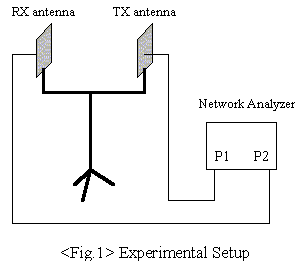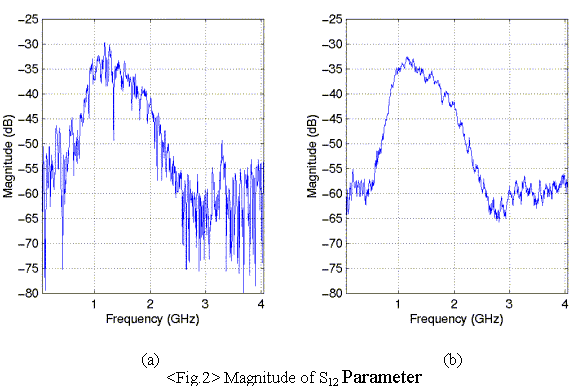Antenna Measurement
The magnitude of the transfer function of an antenna system can be obtained by measuring the S12 parameter of the antenna system two-port using a network analyzer. Ideally this should be done in an anechoic chamber to provide accurate and repeatable results. Fig.1 is the block diagram of the experimental setup. Transmitting and receiving antennas, separated by 1 meter, are connected to the ports of a network analyzer. The S12 parameter of this antenna system was measured over the frequency range from 50 MHz to 4.05 GHz and averaged over 16 sweeps.

Fig2.(a) shows the magnitude of the S12 parameter of a typical pair of inverse-bow-tie antennas, now sometimes called diamond dipoles (see [1] below). In this plot, a number of zigzags can be observed in a non-anechoic environment because frequency components in different multipath signals interacted constructively and destructively with each other. Fig.2-(b) is the plot of the averaged data taken at 32 different locations while the distance between the two antennas and their orientation was kept the same. In this measurement, direct path signal does not change very much while multipath signals changed with different environments, so that the effect of the multipath is reduced by averaging.

[1] H. G. Schantz and L. Fullerton, "The Diamond Dipole: a Gaussian Impulse Antenna," 2001 IEEE AP-S International Symposium and USNC/URSI National Radio Science Meeting, Boston, July 8-13, 2001.

